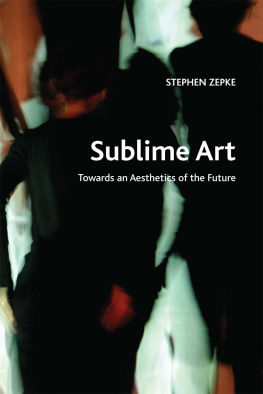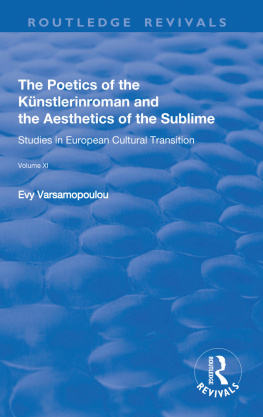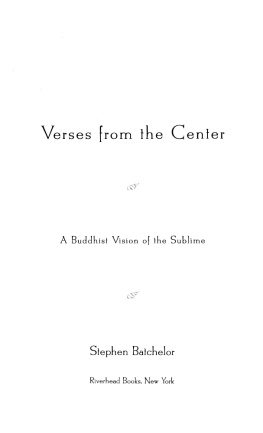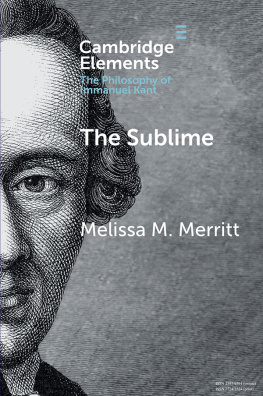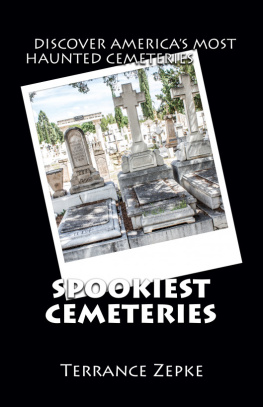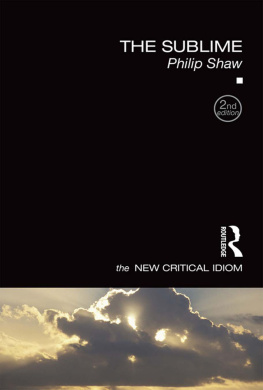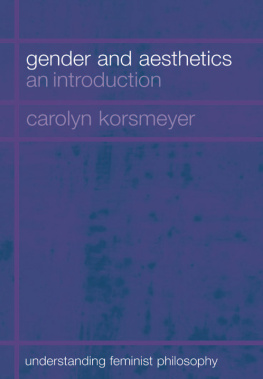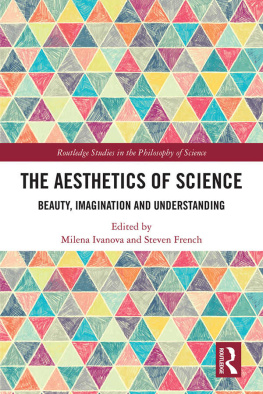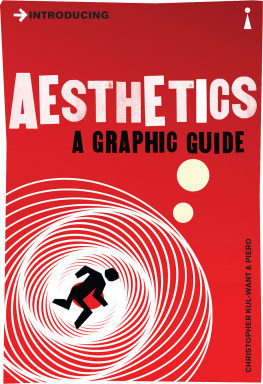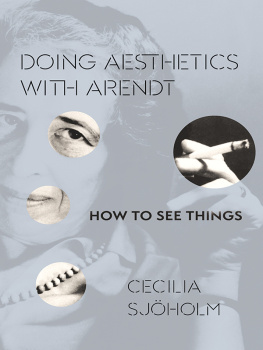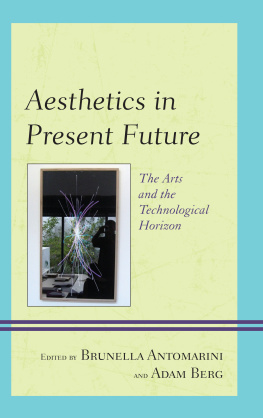Zepke Stephen - Sublime Art: Towards an Aesthetics of the Future
Here you can read online Zepke Stephen - Sublime Art: Towards an Aesthetics of the Future full text of the book (entire story) in english for free. Download pdf and epub, get meaning, cover and reviews about this ebook. publisher: Edinburgh University Press, genre: Science. Description of the work, (preface) as well as reviews are available. Best literature library LitArk.com created for fans of good reading and offers a wide selection of genres:
Romance novel
Science fiction
Adventure
Detective
Science
History
Home and family
Prose
Art
Politics
Computer
Non-fiction
Religion
Business
Children
Humor
Choose a favorite category and find really read worthwhile books. Enjoy immersion in the world of imagination, feel the emotions of the characters or learn something new for yourself, make an fascinating discovery.
- Book:Sublime Art: Towards an Aesthetics of the Future
- Author:
- Publisher:Edinburgh University Press
- Genre:
- Rating:3 / 5
- Favourites:Add to favourites
- Your mark:
- 60
- 1
- 2
- 3
- 4
- 5
Sublime Art: Towards an Aesthetics of the Future: summary, description and annotation
We offer to read an annotation, description, summary or preface (depends on what the author of the book "Sublime Art: Towards an Aesthetics of the Future" wrote himself). If you haven't found the necessary information about the book — write in the comments, we will try to find it.
Sublime Art: Towards an Aesthetics of the Future — read online for free the complete book (whole text) full work
Below is the text of the book, divided by pages. System saving the place of the last page read, allows you to conveniently read the book "Sublime Art: Towards an Aesthetics of the Future" online for free, without having to search again every time where you left off. Put a bookmark, and you can go to the page where you finished reading at any time.
Font size:
Interval:
Bookmark:

SUBLIME ART
Crosscurrents
Exploring the development of European thought through engagements with the arts, humanities, social sciences and sciences
Series Editor
Christopher Watkin, University of Cambridge
Editorial Advisory Board
Andrew Benjamin
Martin Crowley
Simon Critchley
Frederiek Depoortere
Oliver Feltham
Patrick ffrench
Christopher Fynsk
Kevin Hart
Emma Wilson
Titles available in the series:
Difficult Atheism: Post-Theological Thinking in Alain Badiou, Jean-Luc Nancy and Quentin Meillassoux
by Christopher Watkin
Politics of the Gift: Exchanges in Poststructuralism
by Gerald Moore
Unfinished Worlds: Hermeneutics, Aesthetics and Gadamer
by Nicholas Davey
The Figure of This World: Agamben and the Question of Political Ontology
by Mathew Abbott
The Becoming of the Body: Contemporary Womens Writing in French
by Amaleena Daml
Philosophy, Animality and the Life Sciences
by Wahida Khandker
The Event Universe: The Revisionary Metaphysics of Alfred North Whitehead
by Leemon McHenry
Sublime Art: Towards an Aesthetics of the Future
by Stephen Zepke
Forthcoming Titles:
Visual Art and Projects of the Self
by Katrina Mitcheson
Visit the Crosscurrents website at edinburghuniversitypress.com/series/cross
SUBLIME ART
Towards an Aesthetics of the Future
Stephen Zepke

Edinburgh University Press is one of the leading university presses in the UK. We publish academic books and journals in our selected subject areas across the humanities and social sciences, combining cutting-edge scholarship with high editorial and production values to produce academic works of lasting importance. For more information visit our website: edinburghuniversitypress.com
Stephen Zepke, 2017
Edinburgh University Press Ltd
The Tun Holyrood Road
12(2f) Jacksons Entry
Edinburgh EH8 8PJ
A CIP record for this book is available from the British Library
ISBN 978 1 4744 0492 1
The right of Stephen Zepke to be identified as the author of this work has been asserted in accordance with the Copyright, Designs and Patents Act 1988, and the Copyright and Related Rights Regulations 2003 (SI No. 2498).
This book has been a long time coming and many people have helped me in what has sometimes been a difficult process. Most practically, my sincere thanks to Mark Jackson, Ralph Paine, Sjoerd van Tuinen, Nick Thoburn, Louis Schreel, Claudia Mongini, Chris Penfield, Ashley Woodward and Eckardt Lindner who all took the time to read parts of the book and give me feedback. I regret that my text has not always been able to reflect the incisive nature of their comments. Carol Macdonald at EUP has been very supportive and extremely patient. Various invitations to speak enabled me to develop specific parts of my research. In this regard thanks to Tom Medak and Petar Milat at MAMA, Zagreb; David Quigley at the Merz Akademie, Stuttgart; Dan Smith (twice) at Purdue University, West Lafayette; Mrten Spngberg at the Performing Arts Forum, St Erme; Juan Fernando Meja Mosquera at Javeriana University, Bogot; Christopher Braddock at AUT University, Auckland; Janne Vanhanen at KAVA, Helsinki; Sjoerd van Tuinen (twice) at Erasmus University and V2, Rotterdam; Elisabeth von Samsonow at the Akademie der bildenden Knste, Vienna; Audrone Zukauskaite at the Contemporary Arts Center, Vilnius; and the Masters students at the Bergen School of Art, Bergen.
Originally I had wanted to include sections in the book discussing the work of my favourite contemporary artists, and in some cases I had actually written these, but for various reasons they finally had to be left out. So my thanks and heartfelt apologies go to Hannes Schoisswohl, Ralph Paine, Mladen Bizumic, Martina Steckholzer, Yves Mettler, BADco (and thanks to them as well for the cover image), Rosario Lpez and Scott Hayes. Your work is tops!
Finally, for their inspiration, friendship and love I would like to express deep gratitude to my wife Anita Fricek, Tom Medak and Ivana Ivkovi, Nick Thoburn and Runa Khalique, Dan Smith and Catherine Dossin, Nikolas Kolonios, Ralph Paine and Fiona Johnston, Yves Mettler, Mark Jackson and Maria OConner, Arturo Silva and Gabi Jutz, Angelika Reichart and Mladen Bizumic, Claudia Hirtl, Leonardo Kovaevi, Scott Hayes, Claudia Mongini, Karma and Lena Percy, Mary Jane and my family Jeanette Parsons, Josh Parsons, Nick Zepke and Linda Leach. My mother Gay Zepke died during the writing of this book, which is dedicated to her memory.
Quotations from Kants three Critiques are referenced to section numbers, followed by the page numbers of the English and German editions referred to below.
| CPR | Immanuel Kant (1929 [1st edn 1781, 2nd edn 1787]) Critique of Pure Reason, trans. N. Kemp Smith. London: Macmillan. |
| Immanuel Kant (1956) Kritik der reinen Vernunft, ed. W. Weischedel, Vols 3 and 4 in Suhrkamps paperback edition. Frankfurt am Main: Suhrkamp. | |
| CPrR | Immanuel Kant (1997 [1788]) Critique of Practical Reason, trans. and ed. M. Gregor. Cambridge: Cambridge University Press. |
| Immanuel Kant (1956) Kritik der praktischen Vernunft, Grundlegung zur Metaphysik der Sitten, ed. W. Weischedel, Vol. 7 in Suhrkamps paperback edition. Frankfurt am Main: Suhrkamp. | |
| CJ | Immanual Kant (1987 [1790]) Critique of Judgment, trans. W. S. Pluhar. Indianapolis and Cambridge: Hackett. |
| Immanuel Kant (1956) Kritik der Urteilskraft, ed. W. Weischedel, Vol. 10 in Suhrkamps paperback edition. Frankfurt am Main: Suhrkamp. |
Two or more currents flowing into or through each other create a turbulent crosscurrent, more powerful than its contributory flows and irreducible to them. Time and again, modern European thought creates and exploits crosscurrents in thinking, remaking itself as it flows through, across and against discourses as diverse as mathematics and film, sociology and biology, theology, literature and politics. The work of Gilles Deleuze, Jacques Derrida, Slavoj iek, Alain Badiou, Bernard Stiegler and Jean-Luc Nancy, among others, participates in this fundamental remaking. In each case disciplines and discursive formations are engaged, not with the aim of performing a predetermined mode of analysis yielding a philosophy of x, but through encounters in which thought itself can be transformed. Furthermore, these fundamental transformations do not merely seek to account for singular events in different sites of discursive or artistic production but rather to engage human existence and society as such, and as a whole. The cross-disciplinarity of this thought is therefore neither a fashion nor a prosthesis; it is simply part of what thought means in this tradition.
Crosscurrents begins from the twin convictions that this remaking is integral to the legacy and potency of European thought, and that the future of thought in this tradition must defend and develop this legacy in the teeth of an academy that separates and controls the currents that flow within and through it. With this in view, the series provides an exceptional site for bold, original and opinion-changing monographs that actively engage European thought in this fundamentally cross-disciplinary manner, riding existing crosscurrents and creating new ones. Each book in the series explores the different ways in which European thought develops through its engagement with disciplines across the arts, humanities, social sciences and sciences, recognising that the community of scholars working with this thought is itself spread across diverse faculties. The object of the series is therefore nothing less than to examine and carry forward the unique legacy of European thought as an inherently and irreducibly cross-disciplinary enterprise.
Font size:
Interval:
Bookmark:
Similar books «Sublime Art: Towards an Aesthetics of the Future»
Look at similar books to Sublime Art: Towards an Aesthetics of the Future. We have selected literature similar in name and meaning in the hope of providing readers with more options to find new, interesting, not yet read works.
Discussion, reviews of the book Sublime Art: Towards an Aesthetics of the Future and just readers' own opinions. Leave your comments, write what you think about the work, its meaning or the main characters. Specify what exactly you liked and what you didn't like, and why you think so.

